It’s time to move away from albums, gigs and photos for a while and take a look at some of the music-themed books that have kept me sane on buses, trains and planes during 2015. By sheer chance, I’ve managed to pick out quite a nice variety of styles and themes, so the selection staggers from light-hearted memoirs through serious autobiography to high technology and serious crime (no, I don’t mean the new Coldplay album). So, as ever, in no particular order, here we go.
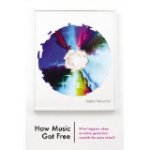 “How Music Got Free” – Stephen Witt
“How Music Got Free” – Stephen Witt
There’s a myth that’s been perpetuated about the origins of the current situation where we have a generation that won’t pay for music and a generation that doesn’t even recognise the concept of paying for music. What Stephen Witt’s book achieves is a comprehensive demolition of the myth that file-sharing came about because of some sort of people’s revolution where millions of like-minded people decided to share their digital music collections. This well-researched work picks out the various converging paths ultimately leading to the digital devaluation of music. The book explores the bureaucracy that bedevilled the adoption of a standard compression algorithm, the greed of the major music labels as they rushed into the highly lucrative CD market, the failure of the majors to react to the phenomenon of file compression (and increasing online transfer speeds which made sharing a viable proposition) and the outright criminality involved in stealing and counterfeiting masters from CD pressing plants. It’s a fascinating but ultimately depressing book.
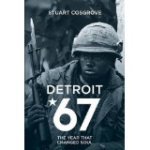 “Detroit 67: The Year that Changed Soul” – Stuart Cosgrove
“Detroit 67: The Year that Changed Soul” – Stuart Cosgrove
Stuart Cosgrove has picked out a pivotal year in the history of Motown and imposed a structure of a chapter per month (it works pretty well) which sets the upheavals at Motown against a backdrop of riots in Detriot, unrest in the police force and a general national malaise. Berry Gordy plays a central role in the well-known story of Diana Ross’s advancement at the expense of the other Supremes (and the expulsion of Florence Ballard), but Stuart Cosgrove delves deeper into the sickness at the heart of the company, dealing with the unease of major artists and the ultimate defection of the Holland/Dozier/Holland writing/production team. The book goes far beyond music biography by showing these events in the context of a city in meltdown with riots on either side of the racial divide and a brutal, corrupt police force fanning the flames. It’s a fascinating read, although there are far too many typos in the Kindle edition.
 “Fortunate Son” – John Fogerty
“Fortunate Son” – John Fogerty
Confession time: the first song I performed in public was Creedence’s “Up Around the Bend” in a school band which included some good musicians and a future nuclear physicist, and me. I was a fan from an early age. “Fortunate Son” is John Fogerty’s attempt to put the record straight after accusations and counter-accusations, suits and counter-suits with his former band members Doug Clifford and Stu Cook. The book is unflinchingly honest throughout; John Fogerty isn’t trying a whitewash here. He owns up to his mistakes and errors of judgement and this gives him the right to expose others’ lies and hypocrisy. It’s difficult not to empathise with him in his battles with Saul Zaentz and the former Creedence members: he wrote the songs, after all. “Fortunate Son” pivots around John Fogerty’s meeting with his second wife, Julie, who brought order to his chaotic life and pushed him back towards popular and critical recognition. It’s good, it’s honest, it’s straightforward and it’s delivered in an authentic John Fogerty voice.
 “Unfaithful Music and Disappearing Ink” – Elvis Costello
“Unfaithful Music and Disappearing Ink” – Elvis Costello
Declan McManus has an awful lot of stories to tell and, not surprisingly, he has a gift for writing and storytelling. “Unfaithful Music…” is a cracking read, giving an insight into the creation of some wonderful music, and life in the music business bubble. The book doesn’t follow a straightforward chronological structure; it’s much more like a conversation in the pub with each observation triggering another digression. There are some difficult events to deal with (the Stephen Stills/Ray Charles incident for example) and they’re all dealt with in a very matter of fact way. The book skips over some big chunks of Elvis Costello’s life, but the ones he does tackle are done with honesty and candour. The names that crop up as the story unfolds are a history of popular music, but this never feels like name-dropping, they’re just people who happen to have been around at certain times. This is a wonderful book.
“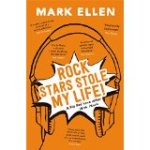 Rock Stars Stole My Life” – Mark Ellen
Rock Stars Stole My Life” – Mark Ellen
Mark Ellen’s memoir is a breezy and self-deprecating run through a life as a pop journalist, radio presenter, TV presenter and publisher. He gives an inside view on life at the NME in the seventies, The Old Grey Whistle Test and the Live Aid broadcast, all delivered in a jaunty style that’s very easy to read. He’s met and worked with some amazing people (again, it’s all matter-of-fact rather than name-dropping), but being a member of Ugly Rumours with Tony Blair takes some beating. Most of the book is fairly gentle humour, smiles rather than guffaws, but Mark Ellen saved the best for last. His account of the mayhem aboard Rihanna’s ill-conceived and farcical round-the-world-in-seven-days tour made me laugh out loud. The entire book’s funny, but this piece was hilarious.
If you don’t see anything you fancy there, Chrissie Hynde’s “Reckless” and Bob Harris’s “Still Whispering After All These Years” are both well-written and interesting biographies.
 The objective Zola Jesus set herself for her fourth album was to face her own fears about how her love for pop music would eventually have to inform her work and what that might sound like. It is significant maybe that the oldest song here and the one that finally forced Jesus into the glare of potential mainstream and started the ball rolling, “Dangerous Days”, is also the purest pop song on “Taiga”. It has a brightness that contradicts its title, a brilliant pre chorus, an actual chorus which is only slightly less captivating and a sonic energy that’s slick and addictive and brings to mind the slightly more intricate and risky songs from Madonna’s mighty “Ray of Light” album.
The objective Zola Jesus set herself for her fourth album was to face her own fears about how her love for pop music would eventually have to inform her work and what that might sound like. It is significant maybe that the oldest song here and the one that finally forced Jesus into the glare of potential mainstream and started the ball rolling, “Dangerous Days”, is also the purest pop song on “Taiga”. It has a brightness that contradicts its title, a brilliant pre chorus, an actual chorus which is only slightly less captivating and a sonic energy that’s slick and addictive and brings to mind the slightly more intricate and risky songs from Madonna’s mighty “Ray of Light” album.
The remainder of Taiga is not really a pop record although it frequently aspires to be one. Soundscapes are stripped almost entirely of any of the glitch that featured on 2011’s “Conatus” or the muddy density on her brilliant breakthrough album “Stridulum II” and replaced by something that is undeniably big and rich but simpler and more concentrated than before. A lot of the songs have beautiful, powerful intermissions; it’s just that too frequently the melodies are lacking the strength to push these tracks to required level, the one which you presume she had in her sights. Dean Hurley co-produces with Jesus and is an odd choice given his primary job as David Lynch’s new sound man, responsible for producing both of Lynch’s inconsistent and naive solo albums, and hardly a name synonymous with making music that can be sung along to. There are references here to the Ryan Tedder meets Sia school of Beyoncé power pop on the crashing but dull “Lawless” and the Rihanna-phrased “Long Way Down” but neither songs would pass the pop queen’s test of a tune that hijacks relentlessly.
The more successful tracks, and “Taiga’” is the definition of a front-loaded album, happen in the first half. “Dust” has a woozy, avant r’n’b doo-wop swing which is hypnotising and commercially-minded and “Go (Blank Sea)” like Petula Clark, and hundreds after her, successfully sees Jesus pining for the eternal pop never-never land of “Downtown”. “Hunger” has a thrusting and bewildering attack of beats, brass and synths – at one point it’s hard to distinguish between the two- and a glacial, persistent string part and is exhilarating and sharply euphoric. “Ego” is a suspended hymn of considerable power where all of “Taiga”’s elements fall into place; a lucid and possessed vocal interrupted by sheets of brass that morph effortlessly into aching strings. The ongoing presence of strings and brass in particular bear out the theory that “Taiga” is more of a continuation of the stripped down “Versions” of last year then something you might hear in a bar. From here on in and midway through “Taiga”’s playing time the focus is lost, however, and gives way to repetition and mediocre tunes. “Hollow”, for example, attempts to salvage some drama and presence but is an oddly similar reimagining of the far superior “Hunger”.
Since the release of “Taiga”, Jesus has been remixed by the likes of The Juan Maclean and Diplo, a still relatively underground sophisticated pop-dance act, and the man rumoured to be producing the next Madonna album. Both artists have done commendable jobs in highlighting the hooks in what were admittedly already two of the album’s stronger songs (“Dangerous Days” and “Go”). Where their real strength lies, though, is in taking Jesus’ music to a demographic previously unaware of her and potentially initiating an interest to investigate further. This is where Jesus and “Taiga” stumble as the initial promise of something different and more accessible is never really delivered so new fans are unlikely to convert and current ones will be dissatisfied at the loss of the incredible depth and half-shaded mystery that permeated her earlier work. A good album still with some great songs but “Taiga” doesn’t quite provide the soundtrack that Zola Jesus commands and deserves, whether she continues to chase her big pop arrival remains to be seen but you feel that this isn’t it.
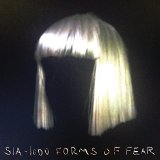 Her association with mega-watt superstars including Beyonce, Rihanna and Katy Perry has meant that bipolar, acutely self-conscious and socially anxious singer-songwriter Sia has never been more famous or exposed. A cruel irony or maybe the plan all along? Four years after her last album, “1000 Forms of Fear”, her sixth, with its shrewd marketing campaign and consistently, relentlessly mighty major-key choruses means that every hen party and XY and Z Factor hopeful will require a copy, but there’s always been much more to Sia than straightforward show-boating. Slowly veering towards coffee table Dido-isms over the course of her discography, the late noughties saw Sia Furler kick through the inoffensive AOR that always threatened to dominate, and collaborated with guitar and synth pop super-producer Greg Kurstin on 2010’s “We Are Born”. More Cyndi Lauper than Madonna (although a Madonna cover was included, Furler and Kurstin both displaying their collective pop chops) it was more forthright, raucous and brightly commercial than anything before, and still managed to incorporate the power ballads that she is better known for. It was also the album that pushed Sia into semi-retirement from performing, instead concentrating on writing material for other artists, an endeavour that has proved to be more successful than her own solo career.
Her association with mega-watt superstars including Beyonce, Rihanna and Katy Perry has meant that bipolar, acutely self-conscious and socially anxious singer-songwriter Sia has never been more famous or exposed. A cruel irony or maybe the plan all along? Four years after her last album, “1000 Forms of Fear”, her sixth, with its shrewd marketing campaign and consistently, relentlessly mighty major-key choruses means that every hen party and XY and Z Factor hopeful will require a copy, but there’s always been much more to Sia than straightforward show-boating. Slowly veering towards coffee table Dido-isms over the course of her discography, the late noughties saw Sia Furler kick through the inoffensive AOR that always threatened to dominate, and collaborated with guitar and synth pop super-producer Greg Kurstin on 2010’s “We Are Born”. More Cyndi Lauper than Madonna (although a Madonna cover was included, Furler and Kurstin both displaying their collective pop chops) it was more forthright, raucous and brightly commercial than anything before, and still managed to incorporate the power ballads that she is better known for. It was also the album that pushed Sia into semi-retirement from performing, instead concentrating on writing material for other artists, an endeavour that has proved to be more successful than her own solo career.
This sound is both amplified and smoothed out on “1000 Forms of Fear”. “Chandelier” starts off sounding a lot like Rihanna and then it doesn’t sound like Rihanna at all. Once you’ve heard, or experienced, its staggeringly audacious chorus you’re unlikely to forget it and it’s hard to imagine anyone else, let alone Rihanna, sing it. Almost a novelty record, such is its persistent, cartoonish swoops and appropriately high drama; one of the most incredible things about this particular song, one that has already defined and led this era, is how much it is a Sia song and could be only be meant for her. Her vocal eccentricities, and they have always been there but never so pronounced, ensure that this ultimately melancholic song has a clear personality attached to it and could never have been interpreted as effectively by any of its potential owners.
“Big Girls Cry” and “Eye of The Needle” are both unsubtle belters that could soundtrack the next Bridget Jones movie and how you feel about this type of sentimental, rom-com ready music generally will determine how much you enjoy them but they are extremely well done here. Apart from the terrifically loping and previously released “Elastic Heart” which is co-produced by Diplo, Furler has again paired up with Kurstin and he is at the helm sonically throughout. Less playful and rambunctious than “We Are Born”, there are still some lovely touches here such as the shredded vocals on the chorus of the manically deranged “Free the Animal” which provides some respite from the reliance on a blared super-hook. The seductive, sawing, “Fair Game” shocks with a sudden, sickly , close-up xylophone solo competing with Sia’s distant moans, and an explosive final third, while “Hostage” gallops along with guitars and a retro Motown energy.
“Fire Meet Gasoline”, another power ballad and probably the crudest here, highlights the problem of Sia’s omnipresence within the current pop framework. It is without question a song which could be a big hit, it sounds like a million-selling Sia record but one which is already recorded by someone other than her. It sounds a lot like “Diamonds” or “Pretty Hurts”, r’n’b mid-tempos sung by two of the world’s most popular and famous female singers but it doesn’t sound like a record that Sia would ever sing. The same goes for the over-long, over-wrought and noisy album closer “Dressed in Black”. Compare these to the hissing and crackling psychodrama of “Cellophane” (‘Can’t you see I’m wrapped in cellophane, watch the blood pump through my veins, electricity floods my brain, can’t hide the pain’), a rare exercise in restraint here and one of the album’s best songs and the equally macabre, bell-flecked “Straight for the Knife” and it’s clear that some songs are closer to the singer’s own world and personal experiences than others and these are the most successful within this context.
Sia is at the very top of her game with “1000 Forms of Fear”, an album which can admittedly fatigue when played from end to end but when individual songs, or the extremely strong middle section, are played in isolation this is indeed some of the most warming but persistently dark and potent music that Sia has both written and performed. The problem is that we can now clearly see, understand and start to deconstruct her formula, within these twelve songs her technique is laid out bare for all to see. The consistent use of metaphors and building a lyrical theme around them rather than the metaphor fitting the songs’ content (nine out of the twelve titles – look at them!) and lyrics which are straightforward and defy any kind of confusion or mis-reading, her traditional use of verse-chorus-verse-bridge-chorus writing and key changes which are predictable but wholly satisfactory; there is no deviation from this pattern. Pop’s most reclusive queen may have her back to the audience but she isn’t the reluctant star she proclaims and “1000 Forms of Fear”is her loudest cry for self-recognition so far and will undoubtedly be her must successful. Good thing too as it seems Sia has finally become tired of standing in the shadows.
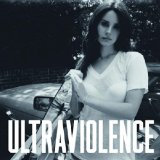 “Born to Die” was an ultimately deceitful album as it was based on the promise that was “Video Games”. Heard only six months before the album debuted and accompanied by the not-quite-equally but still utterly beguiling “Blue Jeans”, these were surely a tantalisingly small taste of what was to come. Thoroughly retrofit, other-worldly and desolate songs with melodies that made you stop what you were doing. “Born to Die”was still a good album but is not the one that many craved or expected and it divided opinion sharply, featuring Del Rey rapping about highly-caffeinated fizzy drinks, repetitive hip hop sounds and samples and a large count of songs that could have just as easily been Britney/Gaga/Rihanna. It was dominated by a production style that can best be described as bombastic and cynical. It also sold in excess of seven million copies and it can safely be presumed that with this came a clout that allowed Del Rey and her choice of producers to finally deliver on that initial promise, as least partially. “Ultraviolence” is the sound of an artist, I suspect, being freed up to fulfil their own creative desires; that sound is both very different from what came before and also very much the same.
“Born to Die” was an ultimately deceitful album as it was based on the promise that was “Video Games”. Heard only six months before the album debuted and accompanied by the not-quite-equally but still utterly beguiling “Blue Jeans”, these were surely a tantalisingly small taste of what was to come. Thoroughly retrofit, other-worldly and desolate songs with melodies that made you stop what you were doing. “Born to Die”was still a good album but is not the one that many craved or expected and it divided opinion sharply, featuring Del Rey rapping about highly-caffeinated fizzy drinks, repetitive hip hop sounds and samples and a large count of songs that could have just as easily been Britney/Gaga/Rihanna. It was dominated by a production style that can best be described as bombastic and cynical. It also sold in excess of seven million copies and it can safely be presumed that with this came a clout that allowed Del Rey and her choice of producers to finally deliver on that initial promise, as least partially. “Ultraviolence” is the sound of an artist, I suspect, being freed up to fulfil their own creative desires; that sound is both very different from what came before and also very much the same.
“Cruel World” opens the album in a grandiose and gloating fashion- at nearly 7 minutes long it declares its own riskiness loudly and with an obvious pride. Dan Auerbach of The Black Keys has, along with Del Rey, decided the sonic template; he produced the majority of the album, and it is represented in full here and is adhered to pretty much throughout. Out go the r’n’b beats, trip-hop, the clattering metallic percussion and the sugared spoken-song rhymes to be replaced by live drums, guitars with serious intent and a dazed and strung out Del Rey yowling ‘you’re fucking crazy – you’re crazy for me’. Leading to her best melody second only to “Video Games”, “Ultraviolence” is a song that could have come at any point during her discography and would be considered one that encapsulates her ability to pull you close and watch the collision. Its controversy is ridiculous and highly theatrical but the beauty is undeniable. “Shades of Cool” is, again, a gorgeous swooping waltz with a falsetto chorus and a line in haughty cattiness that confirms Del Rey’s refusal to play the feminist role in a way that has and will alienate many. The guitars deliriously shred the languid mood to pieces in the final minutes of the song and it’s her best attempt at a Bond theme thus far.
The initially deceptively empty and messy sounding “West Coast” is in many ways “Ultraviolence”’s biggest triumph. As the first piece of music heard from the album it threw many with its refusal to stick to a steady tempo – slowing down dramatically in the chorus only to speed up again- and vocals that during the verses were tight and gulped. It wasn’t the Lana Del Rey we were used to hearing and quite possibly one we didn’t like but repeated listens reveal a thrillingly compact and almost perversely catchy pop song that confirmed that this time around, she wasn’t interested in an easy win. “Brooklyn Baby” is the album’s only concession to light. A track that twirls and revels in a 1960’s, a near Saint Etienne folk-pop confection that has a depth and warmth that isn’t evident at first listen – another slow burner in an album that has many. “Brooklyn Baby” does however highlight a sticking point with Del Rey and that is not her ability as a performer, she sounds far more confident and poised on this album than the last, but her abilities as a song writer. It’s not clear whether the song is bemoaning current-day hipsters or an actual celebration of the beat movement of that time, either way the writing is hackneyed and clunky to the point where it seems to be intentional but then again, I suspect not.
Daddies, diamonds, death, drugs (lots and lots of drugs) and little red dresses have all been referred to by the time we reach the album’s half way point but because of the exceptionally strong songs and performances they don’t grate in the way that they could have done. The Lana Del Rey key-words remain, her stock phrases that have been there from the beginning but still, somehow, have allowed her to create new music without it becoming ludicrous. Because of the baggy and lifeless combination of “Sad Girl” and “Pretty When You Cry” ( those titles!) being stuck together in the middle of the album though, this aspect of the Lana Del Rey persona – wronged woman, sad woman, loves her men bad woman – ultimately and inevitably becomes boring. The venomous “Fucked my Way Up to the Top” and almost brilliant “Money Power Glory” which is let down only by a repetitive and not fully realised chorus, restores some of the energy but it never quite reaches the highs of its first half.
“Ultraviolence” has just about secured Lana Del Rey’s status as An Artist to be Taken Seriously, irritating to many maybe but difficult to deny or avoid given the force at which her vision here takes its form. It’s not an easy album on any level – sonically, lyrically or vocally and the playfulness that littered “Born to Die” has all but evaporated and is replaced by a looser, insidious malaise and increasing desperation which only very occasionally is flushed out by a crystalline piano ballad ( the very lovely “Old Money”) or a laughed-out-loud line. It’s hard to say whether the closing track, a cover version of Nina Simone’s “The Other Woman”, is a ridiculously on-the-nose piss-take on the Del Rey construction or the perfect finale for a pop star whose talent has been to locate something that has been dormant for some time, an ability to transcend cultural dictates and become an individual. Either way it doesn’t really matter, there is music here to daydream deeply to and when done, return to life which will never be as dangerous, sick and romantic as the world that Del Rey has created here. That is indeed, quite a talent.
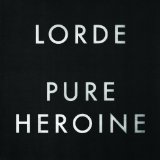 The troubling thing about Lorde is that she’s only sixteen, about to turn seventeen at the time of writing. This, her debut album, sounds like the work of someone in their mid-twenties which isn’t exactly middle aged either but the experience that comes with age does help reinforce artistic credibility, it seems. But this a prejudice and should therefore be discounted. Childhood and very early adulthood is experienced differently based on environmental and social factors and kids are no longer just kids; the definition has become blurred. Exposure to almost everything is effortlessly achieved whether you are in control of what you are experiencing or not and kids now worry about feeling too old, to quote Lorde here, at the age of 16. Her worry is our worry, her talent is that she knows how to create brilliant, massive pop songs.
The troubling thing about Lorde is that she’s only sixteen, about to turn seventeen at the time of writing. This, her debut album, sounds like the work of someone in their mid-twenties which isn’t exactly middle aged either but the experience that comes with age does help reinforce artistic credibility, it seems. But this a prejudice and should therefore be discounted. Childhood and very early adulthood is experienced differently based on environmental and social factors and kids are no longer just kids; the definition has become blurred. Exposure to almost everything is effortlessly achieved whether you are in control of what you are experiencing or not and kids now worry about feeling too old, to quote Lorde here, at the age of 16. Her worry is our worry, her talent is that she knows how to create brilliant, massive pop songs.
There are two very big songs on the seductive, and that it is the right word, “Pure Heroine”. The bigger of the two, “Tennis Court”, begins with Lorde asking the question ‘don’t you think that’s it boring when people talk?’ Although the statement itself is nonsensical without context, she has already stared you straight on and in the space of five seconds you’re captive. Against a bare hip hop beat, wide screen synths and the lonely sound of a repeated and dominant ‘blip blip’ from an imagined early computer game (Atari tennis would be topical of course), the steely-eyed verse can only serve as a perfect appetiser for the sublime chorus. Punctuated by a drunk and slowed down ‘yeah!’ borrowed from the current rap sound favoured by ASAP Rocky and already hijacked by Miley, Lorde is intoxicatingly confident and dominates the song’s boulder-like hook. Interesting that the current number one in the USA, the appropriately majestic “Royals”, and the second very big song here, is lyrically a reaction against hip hop culture which, in the States at least, is a dominant chunk of popular culture (see Miley again). It’s all rumbles and clicks, equal parts Peggy Lee, Lana Del Rey and Lykke Li (vocally they sound very similar, you would never imagine that Lorde is American let alone a New Zealander) but musically it’s as much a classic Rihanna song as anything else currently in the top ten, more “Umbrella” than “Only Girl in the World”.
The remaining eight songs on the self-written “Pure Heroine” are variations on the musical and lyrical themes established in these two songs and apart from a couple of misfires (the album closer ,”A World Alone”, is too heavy-handed in its attempts to demonstrate one of the album’s key subjects of alienation) the quality is very high throughout. The cleverly repetitious “Ribs” is the only track with a recurring and solid dance beat but is drenched in teen melancholy and on the booming and hypnotic “Team”, Lorde lyrically avoids the tirelessly reproduced ‘up in the club’ line by announcing ‘I’m kinda over being told to throw my hands in the air’. “Glory and Gore”, probably owing the most to Del Rey (the ultimate magpie) divides verses up sonically between hip hop via The XX cut with indie pop percussion practices of seemingly banging hard on a saucepan. These clever and effective musical tricks, and there are many, help what could have been a samey-sounding set remain fresh and inventive. “White Teeth Teens” has a 60’s girl group roll and sneer until the confessional line ‘I’ll let you into something big, I’m not a white teeth teen, I tried to join but never did, the way they are and the way they seem; it’s something in the blood’. “Buzzcut Season” contains the lovely line ‘I remember when your head caught flame, it kissed your scalp and caressed your brain’ and demonstrates Lorde’s skill with words, lyrics that can create a fluid and beautiful image.
The worldwide success of Ellie Maria Lani Yelich-O’Connor, her real name, puts her in the post, post-modern situation of becoming what she appears to at least mock here and, at times, hate. A star who is, because of her ability to not only perform but also write and reproduce, is a highly desirable commodity. There is an innocence to Lorde’s “Pure Heroine” which she will be unable to return to, her school friends and their anti-gang, their language and rejection of the mainstream; now she is the mainstream. Her ability to compose and express these experiences in such an accessible and grounded but haunting style may be her downfall but our gain. Ultimately Lorde will just have to decide just how far she wants to go as at the moment there really would appear to be no limits for this extremely talented and intriguing young woman.
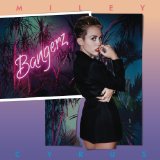 At some point over the last six months Miley Cyrus has stared the current state of Pop Culture directly in its confused and salacious eye and declared ‘it’s on!’ The combination of a short haircut (I know), high cut leotards (I know!), two very good songs, twerking and the most attention hungry VMA performance in years has managed to create the same impact, the same level of horror and disgust as Madonna did when she first rolled around an empty stage in a wedding dress singing “Like A Virgin”, also at the VMAs, in 1984. Both artists understand the rules and both appear to break many when really they know exactly how much they can get away with. Star power remains as such only when the connection is fully made and maintained and right now Miley Cyrus wants your attention all the time; “Bangerz” will go a long way in determining whether she gets it or not.
At some point over the last six months Miley Cyrus has stared the current state of Pop Culture directly in its confused and salacious eye and declared ‘it’s on!’ The combination of a short haircut (I know), high cut leotards (I know!), two very good songs, twerking and the most attention hungry VMA performance in years has managed to create the same impact, the same level of horror and disgust as Madonna did when she first rolled around an empty stage in a wedding dress singing “Like A Virgin”, also at the VMAs, in 1984. Both artists understand the rules and both appear to break many when really they know exactly how much they can get away with. Star power remains as such only when the connection is fully made and maintained and right now Miley Cyrus wants your attention all the time; “Bangerz” will go a long way in determining whether she gets it or not.
As it often the case with these kinds of post-Disney reinventions, Miley Cyrus’ juggernaut of an album (to the Cyrus uninitiated it may seem as though this is her debut when in fact it’s her third album) is steered by the r’n’b producers and song writers du jour, in this instance relative newcomer Mike Will Made It and the evergreen Pharrell Williams. In the case of Williams it features some of his most engaging work in a long time and MWMI shows a diversity to his sound not yet demonstrated on such a vast level. Importantly they understand how to push and develop the pop component and therefore, in this instance, the artist. The surprise for many will be Miley Cyrus herself, the overbearing sound of controversy (Sinead O’ Connor is on her fifth ‘open letter’ to Cyrus at the time of writing, maybe the next should be sealed) having the negative effect, along with several positives of course, of making her hard to hear. Cyrus can really sing, passionately and with humour and drama when required or she feels like it; she is extremely present throughout; something that artists such as Britney Spears or Rihanna can still struggle with.
The first half of the deceptively named “Bangerz” (it’s a fifty-fifty ballad and up-tempo split) is not the strongest. The two massive singles which both feature early on certainly stand out; the opposing ends of the Cyrus vehicle, they are two of this year’s best. Opening the album with a ballad, the “Ray of Light” drum machine skittering “Adore You” is brave but its bland fawning won’t pull you in. The Salt n Pepa-indebted title track featuring a creamy sounding Britney Spears and the twangy, doesy-doe of “4×4” (containing the bizarre lyric ‘driving so fast about to piss on myself’, one of many very odd moments) are both gimmicky and therefore disposable. Unlike the fantastic “Hollaback Girl” (Gwen Stefani) from which this genre was partly born, both songs have forgotten to include a decent chorus. “My Darling” is a mawkish mess and an, albeit imaginative, attempt to uptake Ben E Kings “Stand By Me”.
“#GETITRIGHT” just about sums up the remainder of “Bangerz”. A joyous and naive, guitar-led groove which captures what Madonna was aiming for when she worked with Pharrell but failed to achieve on her flat attempt at urban pop, “Hard Candy”. Williams here produces one of the very best, if not the most triumphant track, on the album with Cyrus sounding ecstatic and utterly contagious. “Drive” is an appropriately named juddering and in turn undulating, excellent metallic ballad. The melancholic drop at the end of the lyric ‘drive my heart into the night, you can drop the keys off in the morning’ hits hard, twerking it seems only being part of Miley’s increasingly sad story. “FU” is another deranged, “I Put A Spell On You”- riffing and swinging show tune underscored by a whomp, whomp dubstep and “Do My Thang” is “We Can’t Stop”’s trappier and more bratty cousin; ‘I’m a southern belle, crazier than hell’. Indeed.
The two tracks which end “Bangerz” are interesting in that they are ballads which I imagine could have appeared on Cyrus’ earlier releases before her ultimate rebirth, the only songs here that this may apply to. I haven’t heard any of Miley Cyrus’ material from this time as I don’t feel that it’s necessary (and I don’t think I would enjoy it) but there is a strong, country feel to them and this is after all a strong part of Cyrus’ heritage (god-daughter of Dolly Parton and daughter of “Achy-Breaky” father Billy Ray and all). “Maybe You’re Right” is more traditional in sound and song structure where “Someone Else” is an insane rave ballad with speed -sung verses and staccato stabs of vocal puncturing the chorus, It fades on a repeated, whooshing synth noise and the album ends; it is satisfyingly odd.
There are probably two more number one songs here to follow on from the two already achieved before the album was released and means that in 2013 Miley Cyrus is a phenomenon. She can follow in the footsteps of Britney, Beyonce, Gaga and, lest we forget, Madonna. All of those artists understand and luxuriate in artifice and have perfected the other art of being worshipped. They also share a seemingly innate understanding of what constitutes the right song and how to fully inhabit it. Right now at least, Miley Cyrus has also synced into their groove and “Bangerz” is the highly enjoyable but flawed soundtrack that will accompany her to the next instalment. Whether it will be as engrossing as this one, who knows so I would suggest that you begin to listen and start to fall in love with her, at least for now.
 So this is Rihanna’s most diverse, sonically challenging and seemingly personal album to date, not that you would ever know it reading the acres of negative reviews and critiques it, or should I more accurately say ‘she’, has had. I understand that you can’t separate the person from the music and to do so would be potentially disastrous, especially for a pop artist, but it seems as though Rihanna’s decision to re-record with Chris Brown, as she has done here, means that everything else about this album, however good or interesting, ceases to count; “So let’s punish her even more by either completing ignoring or trashing her work” seems to be the message of some of the more supposedly ‘intelligent’, left-wing media. I of course have an opinion and yes it does make listening to the song in question here difficult as I see Brown as a particularly nasty man, we know what he’s done and how he’s subsequently portrayed himself as a victim and how America has forgiven him and it is deeply odd, but that has to be seen as a separate issue. Rihanna may be foolish and she may be promoting relationships which are not necessarily recommended for anyone (if her and Brown are in fact back together again) but how do we know what’s ‘real’ and what’s not and who said she has to be a role model? Not Rihanna to the best of my knowledge.
So this is Rihanna’s most diverse, sonically challenging and seemingly personal album to date, not that you would ever know it reading the acres of negative reviews and critiques it, or should I more accurately say ‘she’, has had. I understand that you can’t separate the person from the music and to do so would be potentially disastrous, especially for a pop artist, but it seems as though Rihanna’s decision to re-record with Chris Brown, as she has done here, means that everything else about this album, however good or interesting, ceases to count; “So let’s punish her even more by either completing ignoring or trashing her work” seems to be the message of some of the more supposedly ‘intelligent’, left-wing media. I of course have an opinion and yes it does make listening to the song in question here difficult as I see Brown as a particularly nasty man, we know what he’s done and how he’s subsequently portrayed himself as a victim and how America has forgiven him and it is deeply odd, but that has to be seen as a separate issue. Rihanna may be foolish and she may be promoting relationships which are not necessarily recommended for anyone (if her and Brown are in fact back together again) but how do we know what’s ‘real’ and what’s not and who said she has to be a role model? Not Rihanna to the best of my knowledge.
For people who have actually listened to “Unapologetic” and the not the white noise going on in the background, they may be surprised. First of all there isn’t an ‘”Umbrella’” here, or an ‘”Only Girl in the World” or “We Found Love”. I’ve listened to this album many times and there are many obvious highlights (the bhangra bombast of “Jump” in particular) but there isn’t a massive, joyous pop song here like these previous monsters that become a part of life in that weird way, creating millions of different memories and feelings for people who weren’t, at the time, even necessarily conscious of it. It certainly isn’t the first single, the Sia-penned “Diamonds” which is nice enough and would have made a better Bond song than Adele going through the motions on “Skyfall” and was actually the first indicator that “Unapologetic” was going to be something more personal to Rihanna, something more substantial but not as instant and attention-grabbing as previous releases. There is something admittedly morose about this album, something insidious and creeping and its similarity to the “Rated R” album both thematically and musically would seem to confirm that it’s a world that Rihanna herself likes to inhabit. It’s a well known that after “Rated R”, which was a moody, hip hop album released soon after the incident with Brown, that there was some panic within the Rihanna ‘team’; sales indicated that the brand was maybe too limited. Exactly a year later the trend for Rihanna releasing a new album every 12 months began with “Loud” which was shiny, dancefloor-ready, optimistic and inconsistent, the same goes for “Talk that Talk” which contained some of her most explicit lyrics but some of her most lumbering filler too.
So, “Phresh Out the Runway” tears open “Unapologetic” with a hoover sample from Joey Beltram’s “Mentasm” and is an example of the current Trap music trend which combines hip hop, rap and techno or a hard house/core (see almost everything by Azelia Banks) but the only concession to stadium dance here is the David Guetta (who else?) produced faceless “Right Now” and it is indeed horrible; bad song, badly done. “What Now” on the other hand is a bit of a revelation, starting off as a pacey piano ballad before the theatrics of the dubstep-slammed chorus and a hollering Rihanna create something that is immediate, thrilling and completely ridiculous; it’s brilliant.
“Stay” is another more traditionally performed ballad, musically and vocally, and is a smart song and a lovely performance but it’s the third ballad proper that breaks so many of the rules of a traditional pop song that it’s amazing it appears here in this format at all. At nearly 7 minutes long, “Love Without Tragedy/Mother Mary” changes gear abruptly around the 2 minute mark morphing into a different song completely and has a central performance from Rihanna which is both heartfelt and moving (‘I’m from the left side of an island and I can’t believe this many people know my name, Mother Mary I swear I want to change’) and reminds me of what Madonna was once trying to achieve on her career-defining “Like A Prayer” album. Rihanna is of course the closet thing we have now to the one-time Queen of MTV (they showed pop videos once upon a time you know) and all things Female Pop, both presenting new versions of themselves for each subsequent release and gradually encouraging rage and hostility within the media in conjunction with a fascination and obsession.
Two tracks here don’t have any beats at all (the mood jazz of “Get It Over With” and reggae chugging “No Love Allowed”) and “Numb” is a dark, dubby ode to something that has rendered both her and Eminem incapacitated and would sound right at home on Grace Jones’ “Hurricane” album. There are some weaker moments but for once they’re in the minority; “Loveeeeeeeee Song” is extremely dull, “Lost in Paradise” never quite settles on a convincing melody and “Pour It Up” is morbid, macho hip hop. The aforementioned controversial duet between Rihanna and Brown, “Nobody’s Business”, is actually ok, a breezy, mid tempo Bobby Brown-ish “Two Can Play That Game” swinger.
So my advice is to try and listen to this album if you can and more than just once or twice as, surprisingly for an artist who is still considered to be disposable, Rihanna’s complex seventh album rewards best after several listens. It’s a sterling, experimental pop album that admirably refuses to follow an easy path and may well be her best, I suppose we only have to wait another 12 months to find out.
We apologise for the lack of audio links in this review; for some unknown reason, Spotify has removed the album. If it returns, we’ll try to reinstate the links.


